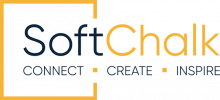E-learning content authoring tools with data analytics features let you identify patterns and trends in student engagement and performance. You can then use these insights to improve learning outcomes. Data analytics is particularly useful when students complete projects, worksheets, and interactive content like quizzes and games. You can learn which students struggle with different learning assignments and which students exceed your expectations.
First, learn some tips for leveraging analytics in distance education environments. Then find out how feedback can improve student outcomes.

Use Tools That Track Student Outcomes With Ease
Tracking student engagement performance manually is difficult. That’s why e-learning authoring tools with data analytics are so helpful. This software collects student data and presents it in reports, charts, and tables, making it easier to identify insights about performance.
However, choose a tool that lets you easily track learning outcomes without a steep learning curve. That means no code or complicated setup process!
SoftChalk is an e-learning authoring tool with various data analytics features. It ensures people in your program achieve learning objectives by tracking student scores. You can identify a student’s strengths and weaknesses by learning how long they spent completing an assignment and the number of times they attempted an assignment.
With these insights into student scores, you can make smarter decisions about your lesson content and change parts of your curriculum if necessary. For example, if the majority of students struggle with a specific assignment, you can modify elements of your program to improve learning outcomes. SoftChalk also lets you print score summaries and email score reports to instructors in your faculty. You can manage score results via the SoftChalk Cloud ScoreCenter.
Use Tools With Various Tracking Options
The best online learning authoring tools let you track various components of your online lessons. For instance, you can discover whether students engage with a particular type of interactive content, such as a true/false test. Or you can learn which types of content students spend the most time on.
The more student analytics you can track, the better. That’s because you get a greater understanding of how all your students perform in your program. You will also find out which content types provide learners with the most value.
SoftChalk lets you generate score results for various types of lesson content. For example, you can learn how many students attempted an online quiz, multiple-choice test, or memory game. You can then compare scores across these content types and find out which ones are the most effective. Alternatively, view score results for individual students and learn how they interact with your lesson content.
SoftChalk uses charts and other visualizations to present student engagement and performance data such as high scores, low scores, average scores, and scoring methods.
Seek Learner Feedback from Two-Way Communication
Tracking score results is just one way to measure learning performance. Two-way communication between instructors and students is just as critical. It allows instructors to provide feedback to students and talk about their strengths, weaknesses, and learning objectives.
The University of Waterloo’s Center for Teaching Excellence has some tips for giving and receiving feedback:
Giving feedback
Instructors must choose the right time to give feedback. Delaying two-way communication for too long can mean feedback loses its impact. If feedback is mainly negative, instructors should prepare what they will say to students.
Another tip for instructors providing feedback is to be specific. They should avoid general comments that provide little value to a student and use examples to back up the statements they make. Feedback should also be an ongoing process and not a one-time event. That will help students improve their learning outcomes over time.
Receiving feedback
Students must listen to the feedback given to them. That means hearing what the other person says, not interrupting, and not making assumptions about what they will say. By listening, the student receiving feedback can absorb information instead of thinking about their next response.
Students receiving feedback should also understand the message given to them before replying. They might want to ask questions to clarify what their instructor says during two-way communication.
Another tip for receiving feedback is following up on it. A follow-up might mean students and instructors set up another meeting to discuss what they said during their first encounter.
SoftChalk allows students and instructors to exchange feedback with its Feedback QuizPopper. A student can answer multiple-choice questions about a topic, and an instructor can provide feedback based on their answers. There is no right or wrong answer in this quiz. It merely helps both parties exchange information with one another.
Why You Should Leverage Analytics to Improve Student Engagement and Performance
E-learning authoring tools with analytics features let you measure student success in your distance education programs. However, choose a tool that tracks student outcomes easily and offers various tracking options. Allowing instructors and students to exchange feedback can also improve student engagement performance.
Want to learn more? Get in touch.

Leave a Reply